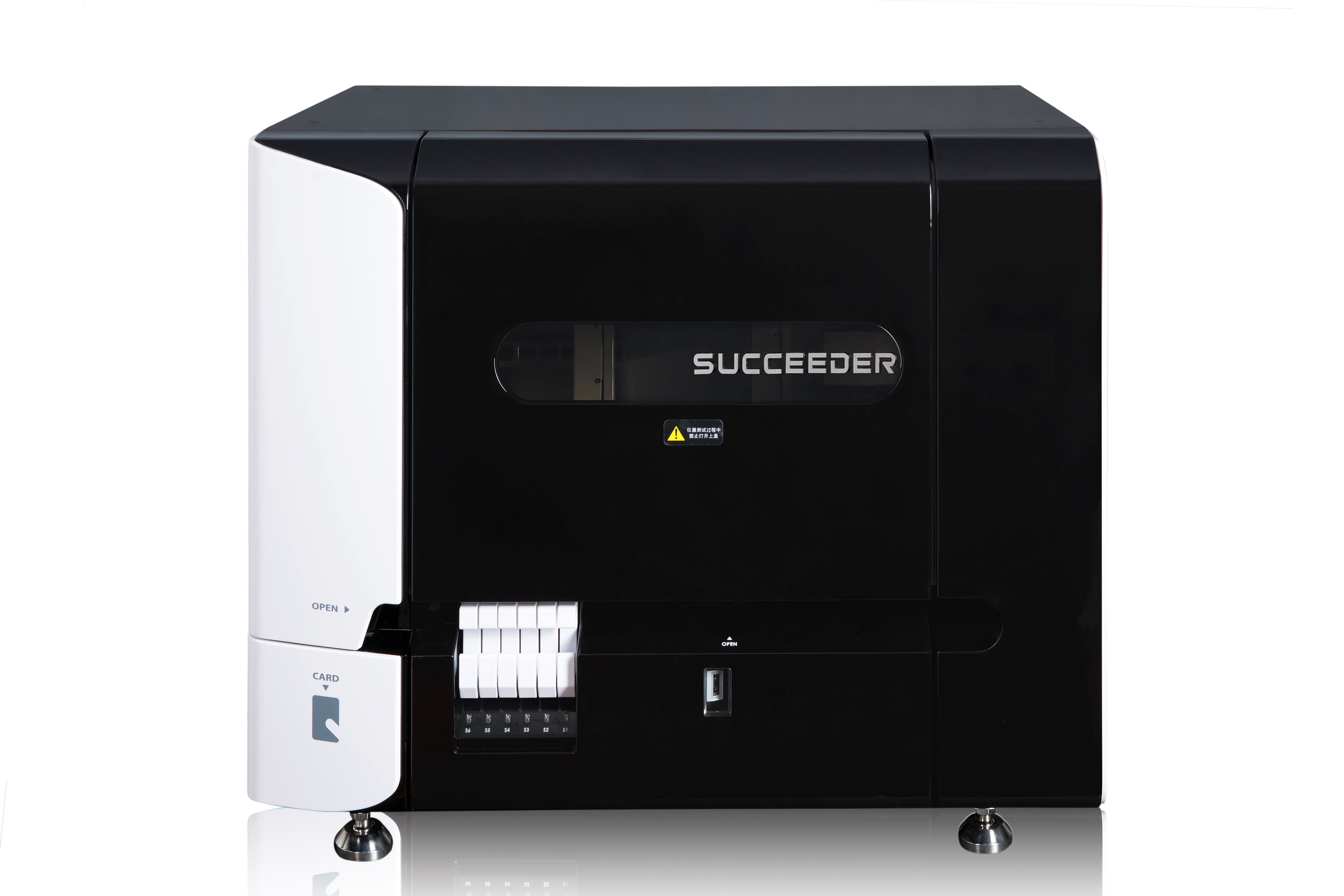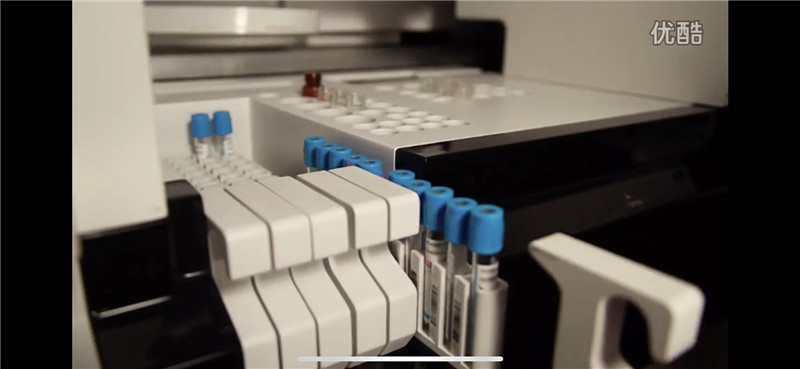

SF-8300 use voltage 100-240 VAC. SF-8300 can be used for clinical test and pre-operative screening. Hospitals and medical scientific researchers also can use SF-8300. Which adopts coagulation and immunoturbidimetry, chromogenic method to test the clotting of plasma. The instrument shows that clotting measurement value is the clotting time (in seconds). If the test item is calibrated by calibration plasma, it can also display other related
The product is made of sampling probe movable unit, cleaning unit, cuvettes movable unit, heating and cooling unit, test unit, operation-displayed unit, LIS interface (used for printer and transfer date to Computer).
Technical and experienced staffs and analyzers of high quality and strict quality management are the guarantee of manufacture of SF-8300 and good quality. We guarantee each instrument inspected and tested strictly.
SF-8300 meets China national standard, industry standard, enterprise standard and IEC standard.
Application: Used for measuring prothrombin time (PT), activated partial thromboplastin time (APTT), fibrinogen (FIB) index, thrombin time (TT), AT, FDP, D-Dimer, Factors, Protein C, Protein S, etc…

| 1) Testing Method | Viscosity based Clotting method, immunoturbidimetric assay, chromogenic assay. |
| 2) Parameters | PT, APTT, TT, FIB, D-Dimer, FDP, AT-Ⅲ, Protein C, Protein S, LA, Factors. |
| 3) Probe | 3 separate probes. |
| Sample probe | with Liquid sensor function. |
| Reagent probe | with Liquid sensor function and Instantly heating function. |
| 4) Cuvettes | 1000 cuvettes/ load, with continuous loading. |
| 5) TAT | Emergency testing on any position. |
| 6) Sample position | 6*10 sample rack with automatic lock function.Internal barcode reader. |
| 7) Testing Position | 8 channels. |
| 8) Reagent Position | 42 positions, contain 16℃ and stirring positions.Internal barcode reader. |
| 9) Incubation Position | 20 positions with 37℃. |
| 10) Data Transmission | Bidirectional communication, HIS/LIS network. |
| 11) Safety | Close-cover protection for Operator safety. |

1. Daily maintenance
1.1. Maintain the pipeline
The maintenance of the pipeline should be carried out after the daily start-up and before the test, in order to eliminate the air bubbles in the pipeline. Avoid inaccurate sample volume.
Click the “Maintenance” button in the software function area to enter the instrument maintenance interface, and click the “Pipeline Filling” button to execute the function.
1.2. Cleaning the injection needle
The sample needle must be cleaned every time the test is completed, mainly to prevent the needle from clogging. Click the “Maintenance” button in the software function area to enter the instrument maintenance interface, click the “Sample Needle Maintenance” and “Reagent Needle Maintenance” buttons respectively, and the aspiration needle The tip is very sharp. Accidental contact with the suction needle may cause injury or be dangerous to be infected by pathogens. Particular care should be taken during operation.
When your hands may have static electricity, do not touch the pipette needle, otherwise it will cause the instrument to malfunction.
1.3. Dump the trash basket and waste liquid
In order to protect the health of test staff and effectively prevent laboratory contamination, trash baskets and waste liquids should be dumped in time after shutting down every day. If the waste cup box is dirty, rinse it with running water. Then put on the special garbage bag and put the waste cup box back to its original position.
2. Weekly maintenance
2.1. Clean the outside of the instrument, moisten a clean soft cloth with water and neutral detergent to wipe the dirt on the outside of the instrument; then use a soft dry paper towel to wipe off the water marks on the outside of the instrument.
2.2. Clean the inside of the instrument. If the power of the instrument is turned on, turn off the power of the instrument.
Open the front cover, moisten a clean soft cloth with water and neutral detergent, and wipe the dirt inside the instrument. The cleaning range includes the incubation area, the test area, the sample area, the reagent area and the area around the cleaning position. Then, wipe it again with a soft dry paper towel.
2.3. Clean the instrument with 75% alcohol when necessary.
3. Monthly maintenance
3.1. Clean the dust screen (bottom of the instrument)
A dust-proof net is installed inside the instrument to prevent dust from entering. The dust filter must be cleaned regularly.
4. On-demand maintenance (completed by the instrument engineer)
4.1. Pipeline filling
Click the “Maintenance” button in the software function area to enter the instrument maintenance interface, and click the “Pipeline Filling” button to execute the function.
4.2. Clean the injection needle
Moisten a clean soft cloth with water and neutral detergent, and wipe the tip of the suction needle on the outside of the sample needle is very sharp. Accidental contact with the suction needle may cause injury or infection by pathogens.
Wear protective gloves when cleaning the pipette tip. After finishing the operation, wash your hands with disinfectant.

